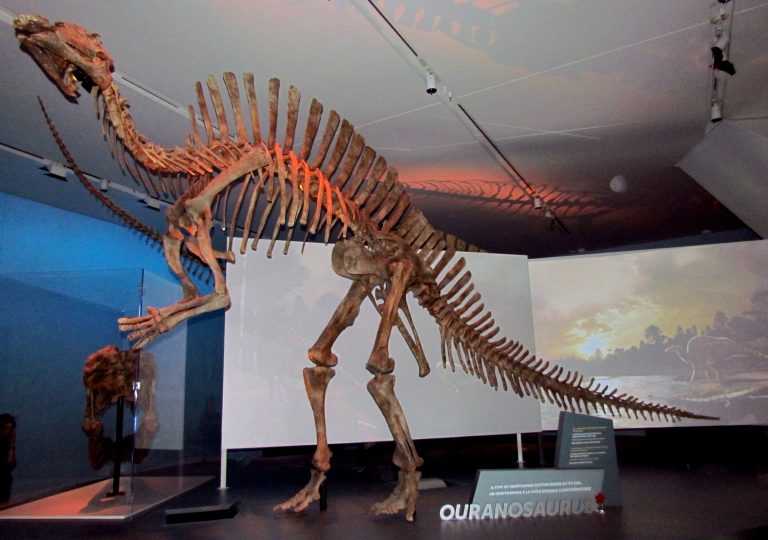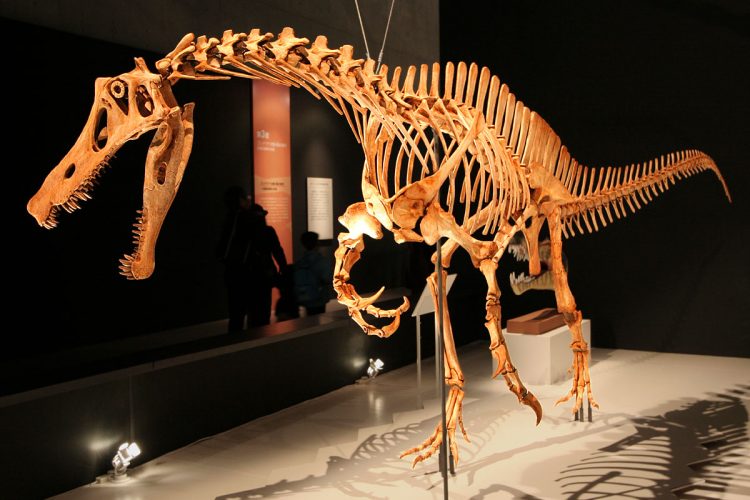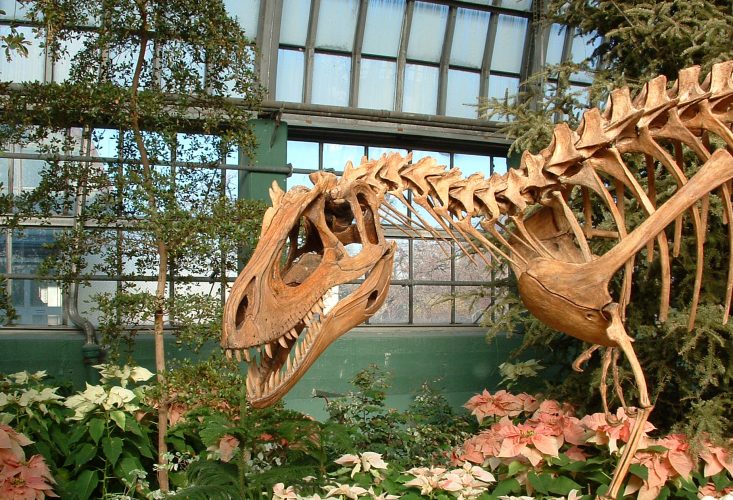10 Facts You Don’t Know About Spinosaurus
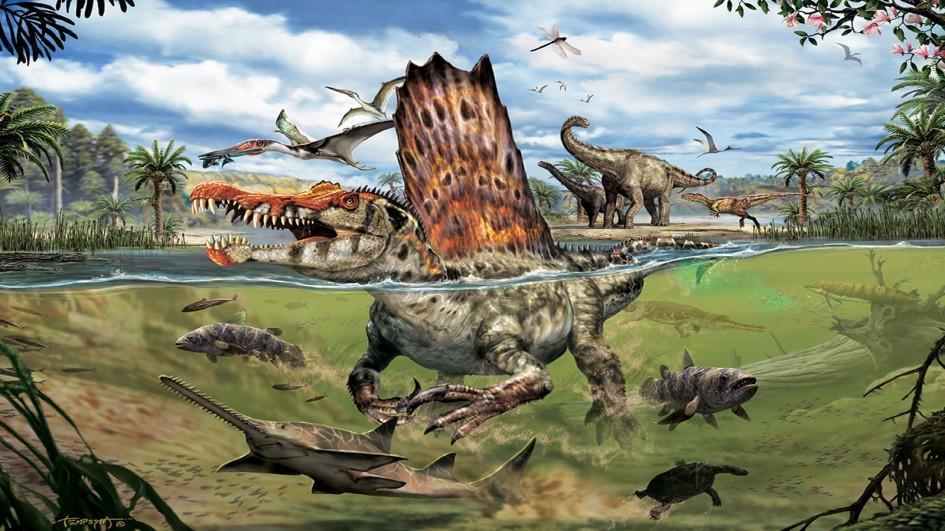
Spinosaurus is one mysterious critter. Why don’t we know more about it? Blame the British (seriously). Here are 10 remarkable factoids about this incredible dino.
1. It Was One of the Largest Carnivorous Dinosaurs of All Time.
Spinosaurus was big. Just how big, exactly? That’s difficult to ascertain, since, to date, no complete skeletons have been unearthed. Some estimate that a large adult could be almost 50 feet long, but the general consensus holds that a maximum length nearer to 41 to 43 feet is far more likely.
2. Spinosaurus was Chosen as the Villain in Jurassic Park III Because of Its Weird Profile.

“A lot of dinosaurs have a very similar silhouette to the T. rex,” said director Joe Johnston, who’d been looking for a new reptilian antagonist to replace Tyrannosaurus in the third film, “and we wanted the audience to instantly recognize this as something else.”
3. Some of the Creature’s Dramatic Spines Were Over Five Feet Tall.

When you’ve got accessories like these things—known scientifically as “neural spines”—sticking out of your vertebrae, nobody tells you to “show some backbone.”
4. Spinosaurus Wasn’t the Only Sail-Backed Dino.
Ouranosaurus (pictured above) was a majestic African herbivore complete with a series of similar-looking spines. Additionally, one enigmatic beast by the name of Deinocheirus appears to have had some too.
5. Paleo-Artists Mis-Drew Its Head For Almost Eighty Years.
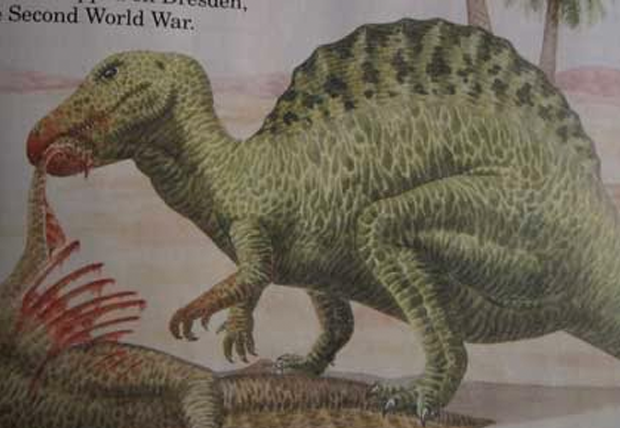
Dinosaur drawings have fairly short shelf-lives (at least in the accuracy department). Until some groundbreaking new discoveries were made in the 1990s and 2000s, paleontologists lacked any good Spinosaurus skull material. Some decently-preserved Spino remains had been found nearly eight decades earlier, but they didn’t include a head. Artists, therefore, gave an educated guess and largely portrayed it with a Tyrannosaurus-like skull for most of the 20th century. It was an honest mistake. We now know that Spinosaurus had, instead, a long, narrow snout—making these pictures obsolete.
6. Frustrated Paleontologists Named One of Its Close Relatives Irritator challengeri Out of Spite.
When dealing with fossils, some assembly is usually required. However, things got a bit extreme in 1995, when a team of scientists purchased the skull of an unknown dinosaur from a Brazilian fossil-poacher. The man had (most disingenuously) smothered the poor thing in a thick layer of car body filler to make his find look bigger than it actually was. As one can imagine, removing this substance proved highly “irritating” for the buyers, hence that strange scientific name.
7. Spinosaurus Has Been Featured on an Array of International Postage Stamps.

It may be extinct, but Spinosaurus’ likeness sure does make for a great stamp—at least the governments of such countries as Liberia and Guyana seem to think so.
8. Spinosaurus Had Plenty of Menu Options.

Like an overgrown heron, Spinosaurus is generally thought to have snagged fishy treats from the North African mangroves it stalked some 97 million years ago. Having a mouth full of long, crocodile-like teeth certainly would’ve helped. But a 2013 paper argues that its diet would have allowed for a lot more variety. Since the animal’s jaws were imperfectly-designed for grappling with fish (at least compared to a modern alligator’s), Spinosaurus probably sought out other entrees as well.
9. Spinosaurus Had Some Really Big Competition.
No one knows exactly why Spinosaurus had that trademark sail on its back. However, with flesh-eating neighbors like the 26-foot Deltadromeus and the T. rex-sized Carcharodontosaurus sharing its habitat, this apparatus might’ve helped Spinosaurus scare off rival killers by making the creature look bigger or more intimidating than it actually was.
10. The Best Spinosaurus Fossils Ever Found Were Destroyed in World War II.
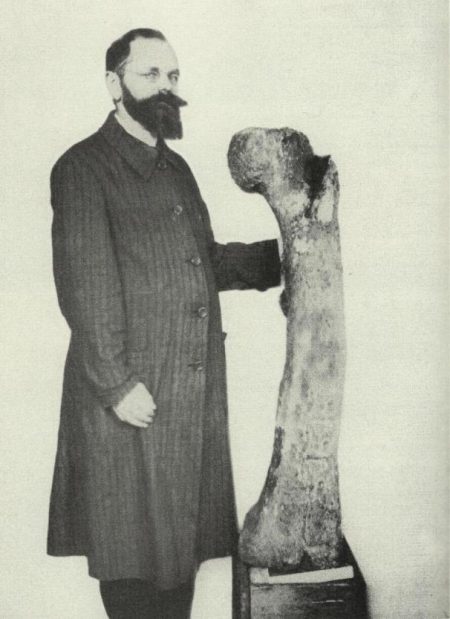
In 1944, the most complete collection of Spinosaurus remains science has so far unearthed were obliterated by the British Royal Air Force. Thirty-two years earlier, they’d been sent to German paleontologist Ernst Freiherr Stromer von Reichenbach, who resided in Munich. Unfortunately, Stromer’s outspoken anti-Nazi sentiments doomed the fossils he cherished. In an act of retribution, Third Reich officials refused to let him move his collection to safer ground during the Second World War, and the museum that housed them was later bombed amidst an RAF raid.
Source: www.mentalfloss.com

